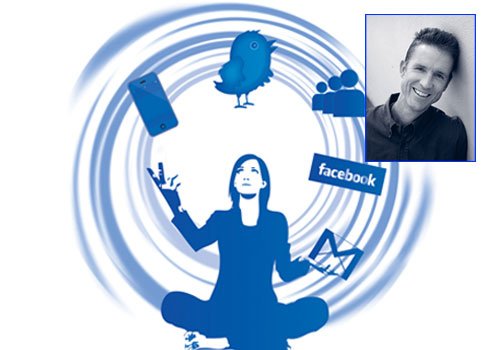On the desk in my bedroom growing up, there was a pretty sizable machine, about as big as a breadbox, as we might have said back then. My dad brought it home from the office. It was an adding machine.
When I say that now it sounds incredibly antiquated, as if I lived in the time when trains were called iron horses. The sounds and shapes and sizes of those days seem so distant to me, and they’re utterly nonexistent for my children. The staccato click of a phone as it dialed each number one by one, the bulky piece of furniture called the television, the record player with one LP after another stacked up like pancakes. The adding machine had huge keys that stayed depressed when you hit them. When you were ready for your sum, you pulled a crank. It was in our house because it had been replaced at work by an electric calculator, which seemed like a big advance at the time. Before long, they were building a large room at my dad’s office to house computers.
Adding. Calculating. Computing. It was about numbers. Those clumsy machines helped us compute things faster than we could in our heads or with a slide rule. Little did we know how many things in life could be reduced to digits, and how our whole way of living would be transformed by that simple act. The digital world would change the very speed at which we live.
Soren Gordhamer, author of Wisdom 2.0: Ancient Secrets for the Creative and Constantly Connected, has made it his business to explore how technology alters our patterns of living and how we can work creatively with those changes. After writing his how-to for living mindfully in the digital realm, Gordhamer decided to start a conversation between people who live and work in the high-tech world, and people who teach mindfulness, yoga, and other techniques for relaxing and synchronizing the mind and body. The idea caught fire. He gathered sponsors and presenters from Google, Twitter, Facebook, eBay, and the like, and brought them together with influential meditation teachers such as Jon Kabat-Zinn, Jack Kornfield, Sharon Salzberg, and Roshi Joan Halifax. He called it Wisdom 2.0.
Three Wisdom 2.0 conferences have been held so far, under the banner “Exploring Living with Awareness, Wisdom, and Compassion in the Technology Age.” The first conference, in May 2010 in Mountain View, California, was followed by a smaller satellite conference in Boulder, Colorado, the following November. I attended the second annual conference in Mountain View in February of this year. It was filled to capacity, with more than 400 people taking part. Wisdom 2.0 is fast becoming more than a conference in high-tech circles. It’s a phenomenon.
Wisdom 2.0 is a conversation among people who have accepted technology and its benefits, but who are also deeply concerned about the inner life. It’s a gathering that reaches right into the heart of the digital world.
“When we were kids we used to play hide-and-seek,” he says. “Sometimes when you were ‘it’ you knew people were there but you just couldn’t find them. So you would yell, ‘Ally ally in come free, come out, come out, wherever you are.’ Then people would come out where you could see them. Wisdom 2.0 is one big ‘ally ally in come free.’ I know there are people at Apple, Facebook, Zynga, Digg, and all these other places, but I don’t always know who and where they are. The conferences are a way to bring everyone out into the light.”
Gordhamer says that Wisdom 2.0 is occurring whenever people realize that “each of us longs for wisdom, and that is what’s really important in life. It’s easy to get caught in the speed of life and forget what we’re here for, our true path.”
Kevin Rose is one of Forbes magazine’s “top five internet celebrities.” He says, “When you’re in tech and you’re running from meeting to meeting and driving across town rushing to another meeting, it’s easy to lose track of yourself. I need a reminder to take a moment and take a breath.” Rose is the founder of Digg.com, a socially networked news site where people vote on stories so “the wisdom of the crowd” determines a story’s play and visibility. “I love The Miracle of Mindfulness by Thich Nhat Hanh,” he says. “It taught me to love washing the dishes, which I never enjoyed before. Why do you do the dishes? To do the dishes.
“And why should you care about mindfulness, about taking a moment to take a breath? Because bad things will happen to you if you don’t. People say, ‘Wow, it’s great you made the cover of Business Week.’ What they don’t know is that I went to the doctor the previous week because I had heart palpitations, because I’m so stressed out from all this pressure that’s on me. You’ve got to be careful or you will go crazy. It will catch up to you.”
“We all can get fascinated by the latest gadget and get lost,” says Gordhamer. “We need to be able to love that newest, latest thing but also completely realize that what’s going to matter on our deathbed when we’re saying goodbye to our bank account, our iPhone, and our name is whether we’ve lived a life that’s been connected to what truly matters.”
Read Mindful.org’s news coverage of the upcoming 2012 Wisdom 2.0 conference taking place on February 23-26: Wisdom 2.0 plans underway and Registration now open for 2012’s Wisdom 2.0 conference.





